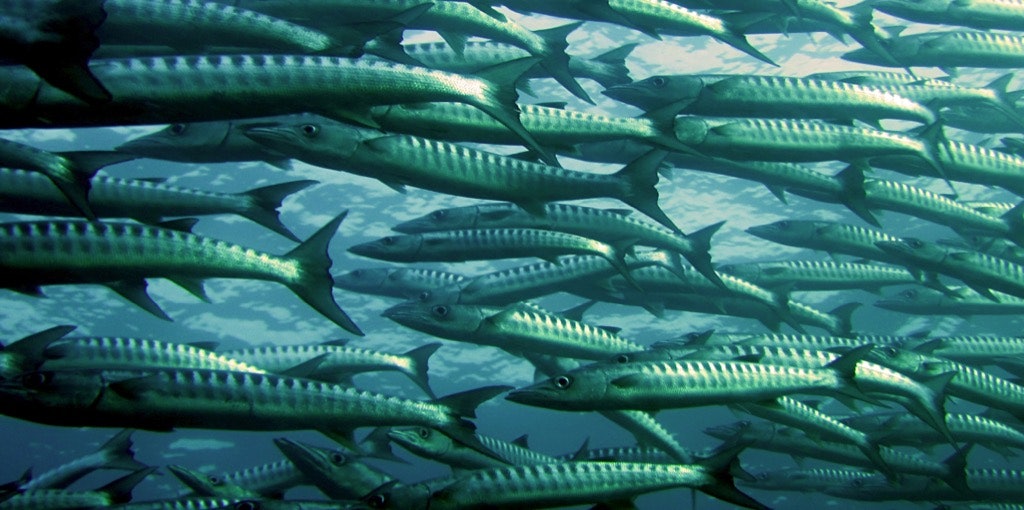The causes and effects of thermal pollution

This article was originally published in August 2017. It has been updated with new insights as of August 2024.
When imagining the types of pollution that result from human activity, you might picture exhaust drifting into the air or harmful chemicals contaminating a river or lake. You probably don’t think of changing temperatures in a body of water, but that’s exactly what thermal pollution — one of the most overlooked and misunderstood forms of pollution — entails.
To help you better comprehend thermal pollution and what you can do to help reduce its climate impact, this guide will cover:
- What is thermal pollution?
- The causes of thermal pollution
- The effects of thermal pollution
- How to mitigate thermal pollution
- Thermal pollution FAQs
What is thermal pollution?
Simply put, thermal pollution is a rapid change in temperature that occurs in a natural body of water. These bodies of water naturally tend to dissipate the heat gained from warm currents, underwater hot springs, and the sun. Thermal pollution occurs when the natural temperature control mechanisms in water are overwhelmed. The sudden temperature change poses a health risk to a wide range of aquatic creatures.
The causes of thermal pollution
Both human and natural factors can contribute to thermal pollution. However, the single biggest cause of thermal pollution is cooling for industrial machinery and power plants. Water is an effective — and free — cooling agent, which is why many industrial operations pull in cold water to cool down their machinery and let warm water flow back into natural bodies of water.
Top examples of thermal pollution caused by humans include:
- Power plants that use fossil fuels such as coal or natural gas release large quantities of heated water into nearby bodies of water.
- Urbanization creates asphalt and concrete surfaces that absorb and retain heat and can result in warm runoff water.
- Deforestation removes shading provided by trees and can quickly elevate water temperatures.
- Agricultural practices can cause excessive nutrient runoff that promotes algal blooms, which then decompose in water while releasing heat.
Thermal pollution also has some natural causes, such as geothermal vents hot springs, and even volcanoes that introduce extra heat into bodies of water. There are also some “natural” causes of thermal pollution that one could argue are indirectly caused by human activity, including forest fires and weather phenomena like heat waves.
The effects of thermal pollution
Warm water holds less oxygen than cool water. If the oxygen level drops animals that cannot move to another area may begin to die. In deeper bodies of water, the injection of warm water can keep oxygen from dispersing into deep water, which is potentially good for bacteria but dangerous for aquatic animals. The decreased oxygen can cause algae blooms that pose a threat to aquatic plants and animals. This algae bloom problem is probably the most common and best-known side effect of thermal pollution.
Decreased dissolved oxygen
Warm water holds less oxygen than cool water. If a body of water suddenly gets warmer and oxygen levels drop, animals that cannot move to another area may begin to die. In large bodies of water, the injection of warm water can keep oxygen from dispersing deeper into the water, which is potentially good for bacteria but dangerous for aquatic animals. The decreased oxygen can cause algae blooms that pose a threat to aquatic plants and animals.
Migration
Fish and amphibians may move away from the warm water to a more suitable location, disrupting the ecosystem for animals that remain. Birds may also be forced to leave in search of areas with more food. Plants and certain animals will be stuck in the area, which can lead to loss of life. Ultimately, migration away from the polluted area can contribute to a sharp decline in biodiversity.
Increased toxins
Toxins in the water are an indirect side effect of dumping wastewater that causes thermal pollution, as chemical pollution is a common byproduct of using water for industrial cooling. Solvents, fuel oil, and dissolved heavy metals end up in the lake or river where the cooling water gets dumped. Nuclear power plants can also release slightly radioactive cooling water. The chemicals may have a range of toxic effects on plants and animals, from fatal poisoning to mutations and sterilization.
Loss of biodiversity
The sudden heating caused by thermal pollution can kill off vulnerable organisms or drive them away. This is one of many serious issues for threatened and endangered animal species. This loss can come from organisms dying from the hot water, being unable to reproduce as effectively as before, or simply leaving the area. We usually think of animals as casualties of water pollution, but multi-celled aquatic plants are also at risk when thermal pollution changes the local aquatic ecosystem.
Reproductive effects
A significant temperature increase in the water can cause reproductive problems. Warmer water can reduce the fertility of some organisms. Other species may suffer birth defects or lay deformed eggs because of chemical changes in the body caused by warmer water. Defective eggs and birth defects hurt the overall reproductive fitness of animals and can even reduce the population.
Increased metabolic rate
Warmer water may be good for cold-blooded fish and amphibians, but only for a limited time. One of many real problems that warm water may cause is faster metabolism, which means animals need more food. The local ecosystem may not be able to support a significant increase in food consumption. Worse still, the warmer water gives an advantage to certain organisms while it puts stress on others. The more adaptable organisms may unbalance the ecosystem simply by out-competing other organisms and by eating them or driving them to starvation.
How to mitigate thermal pollution
Much of the work that can be done to reduce thermal pollution will need to happen at the corporate and/or government level. For instance, artificial lakes, cooling ponds, and cooling towers are all proven scientific techniques that fossil fuel-based power producers might investigate to mitigate their contribution to rising water temperatures.
Another mitigation strategy at the government level is regulating and monitoring temperature discharge limits. Governments and environmental agencies can set specific temperature limits for industries and enforce strict regulations to ensure compliance. Some of these regulatory limits are in place, while others have been blocked by critics who claim they will drastically impact the electricity generation capacity of traditional power plants.
But the best way to reduce thermal pollution may be to embrace renewable energy. Because renewable energy sources such as wind and solar don’t produce heated wastewater, they present an excellent opportunity to maintain ambient water temperatures while simultaneously reducing carbon pollution.
A powerful way to support clean energy
Enrolling in a community solar program is one way to help fight thermal pollution while supporting clean energy in your neighborhood. Getting started with Arcadia couldn’t be easier. It only takes a few clicks to find out if you’re eligible. Click the button below to see if you qualify to save on your annual energy bill.

Ready to make an impact? Sign up for Arcadia community solar today!
Get startedThermal pollution FAQs
Is thermal pollution a form of water pollution?
Yes, thermal pollution is considered a form of water pollution because it alters the natural temperature of bodies of water, affecting their ecological balance and harming aquatic organisms and habitats.
What are the effects of thermal pollution on aquatic ecosystems?
Elevated water temperatures can stress and even kill fish and other aquatic organisms, as many species have specific temperature tolerances for survival and reproduction. Thermal pollution can disrupt animals’ metabolic rates, feeding behaviors, breeding cycles, and overall health.
How does thermal pollution affect water quality?
Thermal pollution can degrade water quality by promoting the growth of algae and other microorganisms, altering chemical balances, and accompanying the spread of pollutants. These changes can lead to eutrophication, a process in which an increased load of nutrients causes an overabundance of algae and plants along with the death of animals from lack of oxygen.


